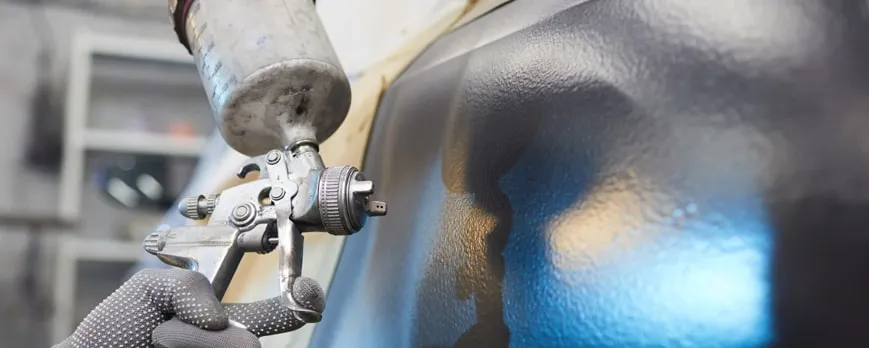What is Elastomeric Paint?
Elastomeric paint is a specialized coating that has a unique ability to stretch and contract with surfaces. Unlike traditional paints, which can crack over time due to environmental stress or surface shifts, elastomeric paints are engineered to retain flexibility. This means they can move with materials like stucco, concrete, and masonry, reducing the chance of cracks and maintaining a solid, continuous finish.
How Elastomeric Paint Differs from Standard Paint
Unlike regular latex or acrylic paints, elastomeric paint contains a higher percentage of solid components, allowing it to stretch more effectively. This composition helps create a waterproof barrier that protects against rain, wind, and even intense UV rays. As a result, it provides superior protection on surfaces that require greater durability.
Key Benefits of Elastomeric Paints
1. Durability and Longevity
One of the standout qualities of elastomeric paint is its durability. This paint is designed to last much longer than traditional paints, often exceeding 10-15 years with minimal maintenance. Its ability to stretch and accommodate surface shifts prevents cracks from forming, which keeps moisture out and prolongs the life of the paint job.
2. Weather Resistance: UV and Moisture Protection
Elastomeric paint offers strong resistance to weather conditions, which makes it an ideal choice for exterior surfaces. It provides an added layer of protection against harmful UV rays, reducing fading and ensuring that the color stays vibrant. Its waterproofing properties make it highly resistant to rain and moisture, reducing issues like peeling and flaking.
3. Energy Efficiency and Insulation Qualities
Elastomeric paint is thicker and provides a better seal than standard paints, which can help in energy conservation. By creating a tightly sealed layer, elastomeric paint can reduce air leaks and help insulate a building more effectively. This feature can be particularly beneficial in extreme climates, where insulation plays a vital role in maintaining comfortable indoor temperatures.
4. Flexible Coating for Different Surfaces
Elastomeric paint’s flexibility is a key benefit, allowing it to adhere well to a variety of materials, including concrete, stucco, and brick. Its ability to expand and contract with the surface it’s applied to means it’s suitable for buildings in areas that experience temperature fluctuations, which can cause cracks in rigid paints.
Drawbacks of Using Elastomeric Paints
1. Potential High Cost
Elastomeric paint is more expensive than conventional paint due to its enhanced formulation and specialized properties. Although it offers long-term savings by reducing the need for frequent repainting, the initial cost may be a deterrent for some property owners or projects on a tight budget.
2. Special Application and Professional Expertise Required
Applying elastomeric paint isn’t as straightforward as standard painting projects. Because it is thicker and has a higher solids content, achieving an even, bubble-free finish can be challenging. Hiring a professional who understands how to handle elastomeric paint is often recommended to ensure the best results, which adds to the overall project cost.
3. Limited Color and Finish Options
Although elastomeric paint has various benefits, it generally comes in a limited range of colors and finishes. This limitation can restrict design choices, especially if a specific color palette or finish is required for aesthetic purposes. Unlike acrylic or latex paints, elastomeric options are often more subdued in color and typically available in matte finishes.
4. Risk of Trapping Moisture and Underlying Issues
While elastomeric paint forms a strong barrier against external moisture, it can trap moisture within the structure if not applied properly. If the surface has any cracks or damage that allow moisture to penetrate before the paint is applied, elastomeric paint could trap this moisture inside, leading to potential mold and structural issues over time.
Best Uses of Elastomeric Paints
Ideal Surfaces and Materials
Elastomeric paint is an excellent choice for surfaces such as stucco, brick, and concrete that experience regular expansion and contraction. It works well in areas prone to extreme weather conditions, where a durable, flexible, and water-resistant coating is essential for maintaining structural integrity.
Suitable Climates and Environmental Conditions
In hot, humid, or rainy climates, elastomeric paint can be an effective solution for protecting buildings against environmental stressors. It also performs well in cold regions where freeze-thaw cycles are common, as it can flex without cracking. However, in areas with low humidity and minimal temperature fluctuations, its added benefits may not justify the extra cost.
Elastomeric vs. Acrylic Paint
Elastomeric paint is far more durable than acrylic paint. While acrylic paint is versatile and more affordable, elastomeric paint’s thicker, more flexible nature allows it to withstand environmental pressures better. However, for projects that do not require extreme weather protection, acrylic paint can be a cost-effective and simpler option.
Elastomeric vs. Latex Paint
Latex paint, commonly used for both interior and exterior applications, lacks the flexibility and durability of elastomeric paint. Latex may not hold up as well in areas prone to cracking or moisture, but it is easier to apply and less expensive, making it a good choice for less demanding applications.
Elastomeric vs. Epoxy Paint
Epoxy paint is highly durable and resistant to chemicals, making it ideal for industrial settings. While elastomeric paint is flexible, epoxy is more rigid and suited to surfaces where flexibility is less important. For residential or outdoor projects requiring protection from the elements, elastomeric paint may be a better fit.


